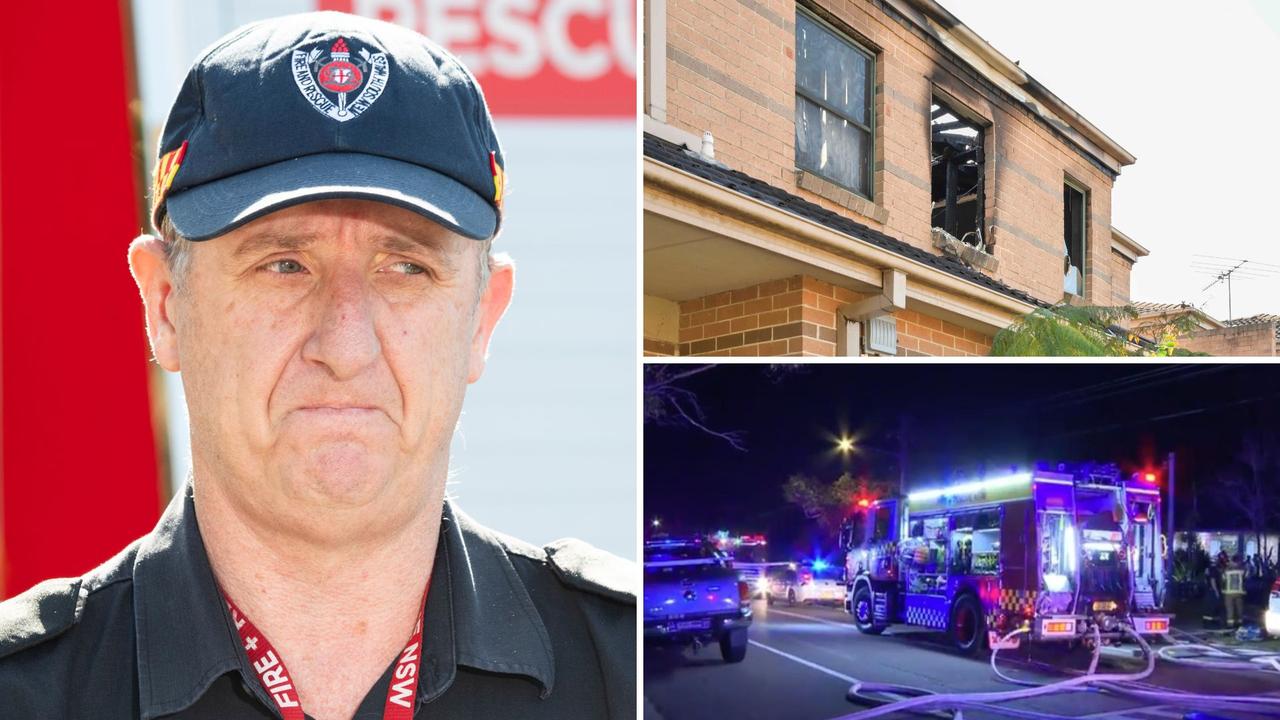The death of a man in a house fire in western Sydney on Saturday night has stoked firefighters’ fears about the increase in battery fires in Australian homes.
Emergency services were called to the scene of a house fire in Punchbowl at about 10pm on Saturday and arrived to find a two-storey townhouse well alight.
A 54-year-old man, later identified as Keiron Summers, was pulled unconscious from the scene and, despite authorities’ efforts to revive him, died at the scene.
Fire and Rescue NSW Superintendent Andrew Shurety told reporters Mr Summers was found with soot around his mouth and nose and likely died after inhaling smoke and toxic gases.
Although investigations into the cause of the fire continue, Mr Shurety noted four lithium-ion batteries were found upstairs.
The fatal blaze has renewed calls for greater safety around rechargeable lithium-ion batteries, as firefighters see a “marked increase” in such fires.
Mr Shurety said while he could not put a number on how often crews are being called to these fires, Saturday night’s blaze was one in a growing amount.
“I’ve been a firefighter for over 30 years and I’ve never seen anything like this,” he said, The Guardian reports.
“In my personal opinion we’re going to be overwhelmed by it, which will be quite shocking to the community, unless we start taking precautions.”
Fire services across the country have long been warning of the dangers of incorrectly using lithium-ion batteries, which can be found in many devices – including phones, computers, powerbanks, toys, and e-bikes.
Lithium battery fires are caused by a chemical reaction inside the battery called thermal runaway which results in a violent bursting of the battery cells and an intense self-sustaining flame that produces toxic gases and can be hard to extinguish.
It is understood Summers took a fire extinguisher upstairs to put out the blaze, which Mr Shurety said was “futile” given the nature of the fire.
“I don’t think people realise a fire extinguisher is not going to extinguish a blaze of that size,” he told reporters.
“Our firefighters do not enter these premises without breathing apparatuses.
“The risk is, if you go into a smoke environment it only takes a couple of breaths of this toxic gas that you can be unconscious and on the floor.”
FRNSW Superintendent Adam Dewberry told news.com.au on Monday afternoon there were multiple areas of interest into the blaze’s origins and investigators were not certain it sparked from a battery.
Nonetheless, he said, the rise of lithium-ion battery fires was an “area of concern” for firefighters and crews had already, by the end of July, responded to 114 such fires this year. There were 160 battery fires in 2022.
A spokesperson for Fire and Rescue Victoria said it was also aware of the rise in lithium-ion battery fires, and urged for caution when using and storing them.
“Lithium ion batteries, although great for our lifestyle, pose a fire risk if damaged, are used incorrectly or are not maintained,” they said in a statement.
“Fire Rescue Victoria implore people to use reputable brands in line with manufacturer specifications.”
Western Australian Department of Fire and Emergency Services Commissioner Darren Klemm said the state was also concerned about the rise in fires sparked by lithium-ion batteries.
In data to July 2023, firefighters in Western Australia have already responded to 33 lithium-ion battery fires, according to the state’s Department of Fire and Emergency Services – almost as many battery fires as there were in all of 2020.
“It’s a concern for us and the public needs to be aware of the risks,” Commissioner Klemm said.
He said the increase in fires was driven by the increased prevalence of products powered by lithium-ion batteries.
“Fires linked to lithium-ion batteries tend to escalate quickly and are very difficult to extinguish, which means there is a high risk of property damage or injuries.
“Our advice is to make sure batteries are charged in a safe place and on a hard surface, away from flammable items.”
Eight fires have been ignited by “small scale” e-scooter batteries in the ACT so far in 2023, too.
Meanwhile, Queensland Fire and Emergency Service (QFES) crews have responded to 59 residential structure fires caused by rechargeable lithium-ion batteries in the 2022/2023 financial year, according to a spokesperson.
In a submission to the Australian Competition and Consumer Commission (ACCC) issues paper on the batteries, QFES said there have been a total of 157 fires reported as having been due to lithium-ion batteries in Queensland since July 1, 2021.
A the time of opening submissions, ACCC Deputy Chair Delia Rickard said the watchdog was “very concerned about the growing number of fires and injuries” linked to the batteries.
“During the past five years we have received over 200 product safety reports about products with lithium-ion batteries including more than 20 product recalls in Australia,” Ms Rickard said.
She said given the volatile nature of the batteries and difficulty to contain the fires they can cause meant it was “critical to find out as much as we can about lithium-ion batteries now, so that we can recommend ways to tackle these issues and reduce the risks”.
A report detailing possible solutions to manage the risks associated with lithium-ion batteries is expected to be released by the end of the year.
